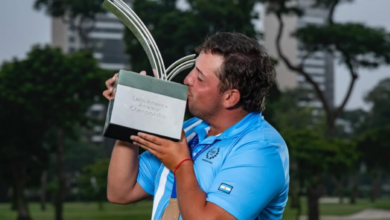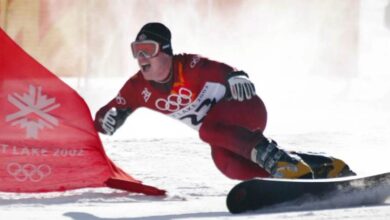F1’s Longest and Most “Controversial” Season Begins in Bahrain
The city of Sakhir will host the first race of the 74th season of the top category of F1.

Photos: TW-F1
LatinAmerican Post | Juan Felipe Rengifo
Listen to this article
Leer en español: La temporada más larga y “polémica” de la F1 inicia en Bahréin
20 drivers of 15 nationalities, 10 teams, 23 circuits and 3 world champions will fight to win the driver and team titles that will be at stake from next Sunday, March 5 at the Bahrain International Circuit. Sportingly, there is a lot at stake, but also from an economic point of view due to the possible change of the maximum shareholders and also the calendar that does not escape the controversies due to the pollution caused by displacement and the alleged human rights abuses suffered by the inhabitants of the arab countries.
You can also read: 20,000 million dollars and more for F1? The proposal that can transform sport
Oracle Redbull, the rival to beat
The 'Bull' team was the dominator of the previous season and is emerging as the top favorite. In 2022, they reached the drivers' title with the Dutchman Max Verstappen and in constructors he ended the hegemony of Mercedes, which had won the title eight consecutive seasons.
Ferrari, looking for consistency
The 'Prancing Horse' team will try to overcome the problems in the race strategy that they experienced last season. The sports director for the 2022 season, the Swiss Mattia Binotto, was replaced by Frédéric Vasseur, the Frenchman will have the responsibility of returning to the top winners in F1 history, a place of honor that they have not achieved since 2008.
Aston Martin, the most outstanding of the preseason
Technologically, the British team has been the single-seater that has evolved the most, compared to last year it has been 2,371 seconds faster. The arrival of former champion Fernando Alonso has meant a leap in quality, and they are emerging as one of the entertainers of the 74 season.
Mercedes, for the absolute supremacy of Hamilton
The German team is not going through its best moment and although the preseason started irregularly due to hydraulic issues, in the final stage of the tests and with Lewis Hamilton in front, they were able to achieve the best times on the last day.
Precisely the consistency and winning mentality of the seven-time world champion is one of the mainstays on which the German team will be able to base its strategy. Additionally, if the Briton is crowned champion, he would obtain his eighth title, which would make him the most winning title in history and this 2023 will equal the 11 seasons in a single team, something that only Michael Schumacher achieved in 2006 with Ferrari.
A diverse but controversial calendar
The 2023 season is in wide breach of zero carbon commitments due to transcontinental travel. Environmentalists don't understand how you build a schedule that goes from Azerbaijan to Miami, to then return to Europe, two weeks later to Canada and back to Europe, not counting the marathon at the end of the season, where you travel from Qatar to Mexico, ending in Abu Dhabi after the circuits that will take place in the United States.
Formula 1 to silence shame?
Various groups defending human rights in the Middle East, especially the Bahrain Institute for Rights and Democracy BIRD, asked Stefano Domenicali, CEO of F1, to analyze the role that sport is having to "wash face" countries like Bahrain and Saudi Arabia that host the first two grand prix of the season. In response, the FIA argued to CNN that they "cannot interfere in the internal affairs of a sovereign state." Let's remember that drivers like Lewis Hamilton have been against racing on circuits where human rights are not respected.
In spite of everything, the 'Big Tent' of motor sports fires its engines this weekend and for the experts it is considered that it could be a determining season due to the multiple factors that are at stake.




